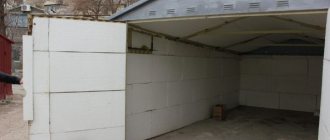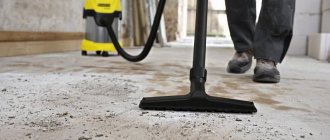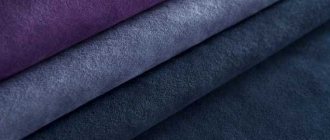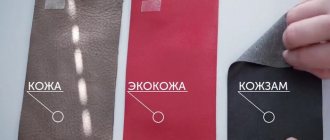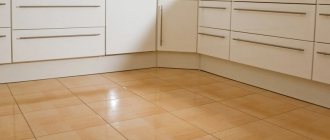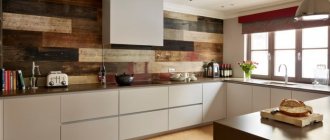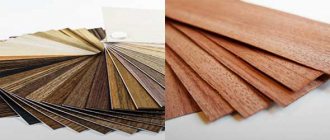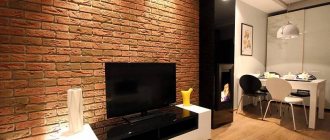Advantages of self-upholstery
For a novice home craftsman, reupholstering kitchen corners is not difficult. Simple design, availability of materials, simple manipulations simplify the process. Advantages of independent work:
- saving money without losing quality;
- acquiring a new skill (after wear and tear, restoration will be needed again);
- You can carry out repairs at any time;
- the opportunity to choose the materials yourself.
Companies offer calling a specialist to your home, taking measurements or removing furniture for subsequent restoration. All this is not cheap, and it takes a lot of time. Therefore, independence is more appropriate here.
A high-quality result cannot be achieved without disassembly, so you will have to spend time disassembling the structure and removing elements. This will allow you to change the coating without damaging other surfaces.
The owner independently assesses the condition of the structure. To strengthen it you will need fittings and suitable fasteners. To update the appearance of wooden panels, you will have to resort to using paint and varnish. To facilitate the process, tools and materials are prepared in advance.
Saving money without losing quality
Learning a new skill
You can make repairs at any time
Possibility to choose your own materials
Reupholstery and upholstery replacement prices
We offer favorable conditions - the cost is determined depending on the nature of the problem and the required amount of time to eliminate it. Several payment methods and affordable prices, a good office location and proximity to central roads, the ability to implement the service at the client’s home and a guarantee of quality are the key to trust and savings!
It’s easy to find out the necessary information - you just need to call 8 (929) 567-77-70 or use the email provided on the website.
Selection of materials
Restoration of kitchen corners requires a careful approach to the choice of material, taking into account operating conditions. Coloring, unusual texture, original design of the canvas are less important than wear resistance and quality. The material is chosen so that you don’t have to reupholster it every year, and the appearance is preserved as long as possible.
| Type of material | Description | pros | Minuses |
| Leather | It is better not to choose genuine leather for self-repair. There is a risk of spoiling the material. It is worth giving preference to artificial. | Durability, spectacular appearance. Wide range of colors, shades, ease of care. | Even artificial leather can be faked, and such material has a much shorter service life. |
| Tapestry | Ideal for frequent use. | Relatively inexpensive material, long service life. Easy to care for using soap solutions. | It becomes unusable after greasy stains appear. Fades with prolonged exposure to direct sunlight. |
| Chenille | Popular material for restoration. | Democratic price. Pleasant to the touch surface. This upholstery is tear-resistant, does not fade, and does not absorb odors. | A wide range is presented only in large cities. In small ones the choice is limited. |
| Flock | Non-absorbent fabric. Suitable for those who decided to upholster furniture themselves for the first time. | The material is resistant to fading and stains. | Short service life: the textured pattern quickly peels off from the surface. |
When choosing material for upholstery, preference should be given to non-marking colors. High-quality fabric is easy to clean; a budget option is more difficult to get rid of stains. It is better to take measurements based on the dimensions of the removed upholstery. If the kitchen is made in the same style, then the material must match in color and texture. The use of contrasting shades for backs and seats is popular. In this case, the corner will become a fashionable accent in the kitchen.
The upholstery of kitchen corners suffers from frequent use, and the fillings lose their elasticity. Sheets of foam rubber are placed inside. In order not to make a mistake with the size, add a centimeter to the measurements on each side.
Leather
Tapestry
Chenille
Flock
Foam rubber
10.Advantages and disadvantages
Let’s summarize and highlight the main positive and negative aspects of such a necessary piece of furniture as a kitchen corner. The advantages undoubtedly outweigh the disadvantages:
- Compactness, due to its relatively small size and ergonomic placement;
- Mobility concerns modular models;
- Functionality due to built-in storage boxes, shelves, additional sleeping space and the ability to accommodate a large number of people;
- Comfort and complete rest while eating;
- Possibility of various configurations, for example, poufs, stools and even a table, which will be made in the same style and color scheme;
- Possibility of manufacturing according to individual order, which makes it possible to make all your desires come true.
The disadvantages include:
- Considering the characteristics of the room in which this type of furniture will be located, the upholstery fabric will quickly become saturated with all sorts of odors. To keep it clean, it is necessary to regularly clean it with special solutions.
- The mechanisms fail over time especially with regular use. If we are talking about a frame made of chipboard, then replacing them will be somewhat problematic due to the fragility of the base material.
- Inconvenient seating. The person who will sit in the middle, in order to leave the table, needs to lift up everyone sitting on the side.
Required Tools
The master will need the following tools:
- hammer;
- drill-driver;
- mites;
- spanners;
- stationery knife;
- glue;
- stapler;
- anti-stapler;
- scissors;
- marking tool.
All of the above is a minimum set. If the design is too complex, then additional tools will be needed. The consumables used are staples, glue, chalk, and furniture nails. If the condition of the furniture is completely deplorable, then you will need suitable fasteners, a jigsaw, sandpaper, and a pry bar. A screwdriver and wrenches will help you disassemble the structure. An anti-stapler and a knife are useful for removing upholstery.
The filler is not always easy to remove. If the manufacturer glued foam rubber, you will have to remove it with a knife and then clean the surface. High-quality glue will allow you to glue the upholstery (a special one is used), and a stapler will allow you to secure the fabric (furniture nails will also work). A knife is recommended for cutting material, and scissors and chalk are recommended for cutting.
11. Secrets of a successful purchase
Of course, when purchasing any item, there are always points that need to be given special attention. To make your choice the most successful and practical, consider the following points:
- The very first thing is to take accurate measurements before purchasing;
- Ready-made kits are always more profitable to purchase than all the elements separately;
- The color and style of the kitchen corner should match the interior of the room;
- Light colors visually expand the space and fill it with light;
- If the walls or curtains have patterns, then the corner should be plain;
- Combine light and dark shades of upholstery, this will diversify the color scheme and add an accent;
- For small kitchen choose a corner with strict, laconic shapes, without unnecessary decoration, so it will look more compact;
- The material of the armrests or other elements should be similar to the material of the kitchen unit. This way the whole composition will look harmonious. If the cabinet fronts are finished with glossy plastic, then the carved wooden corner will look awkward and out of place;
- The frame must be strong;
- Filler – only polyurethane foam of the highest degree of rigidity;
- The optimal upholstery material is microfiber, it is very wear-resistant and affordable;
- If at first you think that models with boxes , banish this thought and purchase functional models. Over time, things tend to accumulate, and you will already have a place for them.
Simple, practical tips that everyone can follow will simplify your choice and make your purchase durable and of high quality.
Tags:Sofa, Kitchen
Stages of work
Do-it-yourself reupholstery of a kitchen corner consists of the following steps:
- design analysis;
- removing old upholstery;
- removing the filler;
- taking measurements and developing patterns;
- sewing cushion covers;
- strengthening the new filler;
- securing new upholstery;
- decoration.
If the condition of the corner is unsatisfactory, then the replacement of drawers, panels and restoration of wooden parts will be added to the stages of work. Additionally, you may need to purchase and install new fittings and strengthen structural elements (if they are loose). Poor quality material wears out more over time, creating an additional problem - repairing weak bolts. Broken sockets are expanded with a drill, dowels are inserted (they are pre-coated with PVA). After the glue has completely dried, you can continue assembling the structure. Self-tapping screws must be used for fastening.
Removing the upholstery
Step-by-step instructions will help you reupholster your kitchen corner properly. An anti-stapler will get rid of staples. It is better not to use a knife for such a procedure, otherwise fasteners may remain in the wooden panel. To remove them, you will need pliers or pliers.
The upholstery is followed by removing the filling. Manufacturers often glue foam rubber to the base. A sharp knife will help to gradually scrape the surface, which must then be carefully removed. The remaining parts of the foam are also removed.
The entire process of removing upholstery, in the case where the design is the same as a non-separable sofa and the corner is completely covered with fabric, comes down to the following points:
- removing seats by removing hinged fasteners;
- backrest disassembly;
- separation of the box from the legs;
- checking parts for fastening and fittings;
- removing staples with an anti-stapler;
- getting rid of filler.
Removing the seats
Parsing the back
Separating the box from the legs
Checking fastening parts and fittings
Removing staples with an anti-stapler
Getting rid of filler
The process of removing the upholstery when the kitchen corner looks like a simple bench with a soft seat and back is divided into several stages:
- clear free space around;
- the frame is dismantled;
- the fabric is removed with an anti-stapler;
- check the corner itself for integrity;
- restore worn parts;
- remove old foam rubber;
- cut new foam rubber and glue it;
- the covers are pulled over the frame;
- fixed with staples on the reverse side without distortion;
- assemble the product.
The removed fabric will be used to clarify measurements, so its integrity must be preserved. Damaged or torn material will not allow you to determine the exact dimensions; for this reason, the structure itself is measured with an allowance for bending.
Disassemble the frame
Remove the upholstery
Restore worn parts
Replace old foam
Cover all parts with fabric
Assemble the product
Cutting fabric and filling
How to renew a kitchen corner after disassembling and removing the upholstery - more on this below. It will not be possible to achieve a high-quality result if you do not cut the fabric or cut the stuffing in advance. Previously removed material is used as a pattern. It is desirable that each element is sheathed in one piece. If this is not possible, then you will need to fasten the flaps together before laying out and tracing the pattern.
If the new upholstery is much denser than the old one, you need to add a couple of centimeters to the measurements. A flap that is too small will not allow enough tension in the fabric. As a result, the material will be damaged, and you will have to take measurements and cut it again.
The master must leave allowances that will be used for tucking and fastening. It is easier to work with the filler; it is simply cut along the contour of the piece of wood or plywood to which it will be glued. To keep the shape longer, add one centimeter to each side when cutting the filler. When fastening, you can use glue or staples (fixation in increments of up to 100 mm).
Cut fabric using old material
Trim the filler along the contour of the furniture
Frame repair
The design of most furniture quickly deteriorates. Before you reupholster the kitchen corner with your own hands, you need to inspect all the elements for wear. Accurate markings and careful, careful work without haste will help you avoid problems during subsequent assembly. One of the common problems is peeling coating on the legs.
Restoration of wooden parts takes place in several stages:
- cleansing from dirt and stains;
- removal of remaining coating;
- sanding;
- filling cracks and delaminations with glue;
- painting;
- fixing the result with varnish.
Any wooden element may require restoration, but a primer is needed before using varnish or paint. In the case when parts of the furniture are replaced with new ones, it is necessary to mark and drill holes in advance for subsequent fastening. Frame repair is a common need when reupholstering a kitchen corner. Elements that have fallen into disrepair are restored. If the wooden legs have lost their former luster or the coating has peeled off, then they are cleaned of external contaminants, sanded, varnished or painted. If cracks or gaps appear in the frame, they are filled with wood glue.
In case of significant damage, the part can be replaced entirely by cutting it out of chipboard. Accuracy and precise markings will make it easier to assemble furniture with a new element. In this case:
- legs are renewed;
- cracked plywood sheets are replaced;
- cracks and delaminations are filled with glue;
- Scratched boards are sanded.
To reliably glue the parts of the structure together, experts advise using clamps. They will press down on glue-coated surfaces without having to hold them with your hands. Clamps enhance the adhesive properties of the material and allow you to securely fasten parts.
Clean from dirt and stains
Remove remaining coating
Sand
Fill cracks and delaminations with glue
Paint and varnish
Reupholstery and assembly
Re-upholstery and assembly are carried out step by step:
- Attach the filler with glue or staples. The standard step is from 5 to 10 centimeters. You will often have to install fasteners on curved surfaces.
- The cut fabric is placed face down on the floor. The part is placed on top of it.
- On each side the material is fixed in the center. Gently tighten so that no distortion occurs.
- Fix in increments of 3 to 4 centimeters using staples.
If the design is complex or the padding is too thin, then we tighten the surface with a carriage tie. Furniture nails can be used as fasteners. This will increase the service life of the new coating.
Reassemble the kitchen corner in the reverse order of disassembly. Where the fasteners will subsequently be, all holes are drilled in advance. This will help avoid damage to the upholstery and filling. The duration and complexity of the work depend on the design. For example, when assembling a sofa from three components, the sequence of actions does not change, only the corner part is assembled first, and then the side parts.
Attach filler
Cover with fabric
Assemble the corner
9.A corner in a small kitchen – is it appropriate or not?
The issue of functionality of small kitchens is very acute, because you need to maintain sufficient space for movement, and place a lot of large equipment, and leave a free work area for the cooking process. In fact, it is very difficult. Modern designers resort to a variety of techniques to come to our aid. A very good solution is to use the free space around the window to place small pencil cases or install a tabletop in front of the window. Household appliances can be built into a tall cabinet, thereby freeing up a small space for the desired kitchen corner. It can make a small room more comfortable.
Choose small kitchen corners with built-in drawers that will replace several cabinets. This way you will visually unload the space, make it more comfortable, but at the same time maintain its functionality. Therefore, there definitely should be a kitchen corner in a small kitchen ! This is the most optimal use of free space.
Choose round or rectangular tables with one leg. This way they will visually appear smaller, and it will be more comfortable to sit down. A corner sofa can accommodate many more people than chairs and stools.
How to decorate
The updated kitchen corner can be left unchanged or decorated. Several popular decoration options:
- decoupage;
- pillows with contrasting covers;
- adding bright accents in the form of rollers or blankets;
- decoration with inserts made of genuine leather or suede;
- use of knitted capes;
- hand painted;
- fastening plywood ornaments.
For decoration, stencils are used that will help you apply designs of varying degrees of complexity onto wooden panels. The use of fringe or tassels is no longer relevant. A repeating pattern is applied to the arms, legs and small plain elements.
You should not use more than two ways to decorate a kitchen set. Too much decoration will ruin the appearance of the corner. It is better to opt for a more concise option.
The decoupage technique should be used with caution. For decoration, one color scheme and one type of pattern are used. If the kitchen already has furniture or appliances decorated in the same way, then it is better to abandon this idea. Otherwise, the appearance will be rustic and rustic.
Even a novice craftsman can reupholster a kitchen corner. The main thing is to strictly follow the step-by-step instructions, do the work carefully and without haste. Updated furniture will decorate the kitchen.
About the restoration and types of repairs of kitchen corners
You can choose a new corner to suit every taste . But frequent use in a room with high humidity and frequent temperature changes harms the furniture. Over time, food and liquids inevitably leave stains on the upholstery, and the fabric can fray and tear. And now, a few years later, we have before us a strong set, but one that has lost all its luster.
The way out of this sad situation will be to reupholster the kitchen corner with new upholstery. The work can be entrusted to specialists, but independent repairs are also quite accessible at home for those who are not afraid and know how to work with their hands.
There are many advantages to reupholstering a soft corner with your own hands. Little skill is needed for such work, because the design is simple and the materials are available. Carrying out all the work yourself will save significant money. All materials can be selected to suit your taste. This is a great opportunity to gain and strengthen useful skills.
Upholstered furniture has the main characteristics:
- coloring;
- design;
- size;
- configuration.
Several years of use wear down the surface of the soft corner, and the design becomes boring. In addition to simply reupholstering furniture, you often want to introduce some innovations into the interior. If you think about such changes in advance, you can easily make them a reality during the process of upholstery replacement.
Let's consider possible options for modernization at home:
- A fashionable option for finishing the back and seat in different colors. These can be contrasting shades or similar combinations. An extravagant combination of colored and plain is possible.
- Patchwork style upholstery. Different pieces of fabric are assembled into a geometric pattern of squares, triangles, stripes, or a chaotic pattern of shapeless shreds. The chaotic pattern is very beautiful, but requires serious sewing skills.
- Use of decorative elements such as buttons. This way you can emphasize the volume of the product and give it an original look.
- Changing the configuration of parts that are not subject to load. A job requiring some carpentry skills. Decorative parts are first cut out of plywood, then attached to the back and sides. The last stage is decorating.
- Adding armrests with soft, removable pads. Such a change will make the furniture more comfortable and bring something new to the decor. In addition, removable attachments are much easier to update than to do a full restoration of the sidewall.
Upholstery requirements
The upholstery fabric must be durable. This requirement is universal. But this is very important for kitchen furniture, since nowhere else in the apartment are there so many sharp objects.
Choose a material that does not require special care. For example, suede and velor look chic. But what happens to their coating after regular contact with water? But accidental contamination in the kitchen is not uncommon. And they will have to be cleaned constantly.
So the fabric should be easy to care for and waterproof. So that if something happens, you can easily wipe the stain away. It’s good if the material has dirt-repellent properties, then removing greasy marks will take a minimum of time.
As for colors, the choice depends on the preferences of the owners and the interior. In pursuit of beauty, do not forget that dirt will be very noticeable on light surfaces. Therefore, preference should be given to more practical shades and patterns. For example, patterned.
